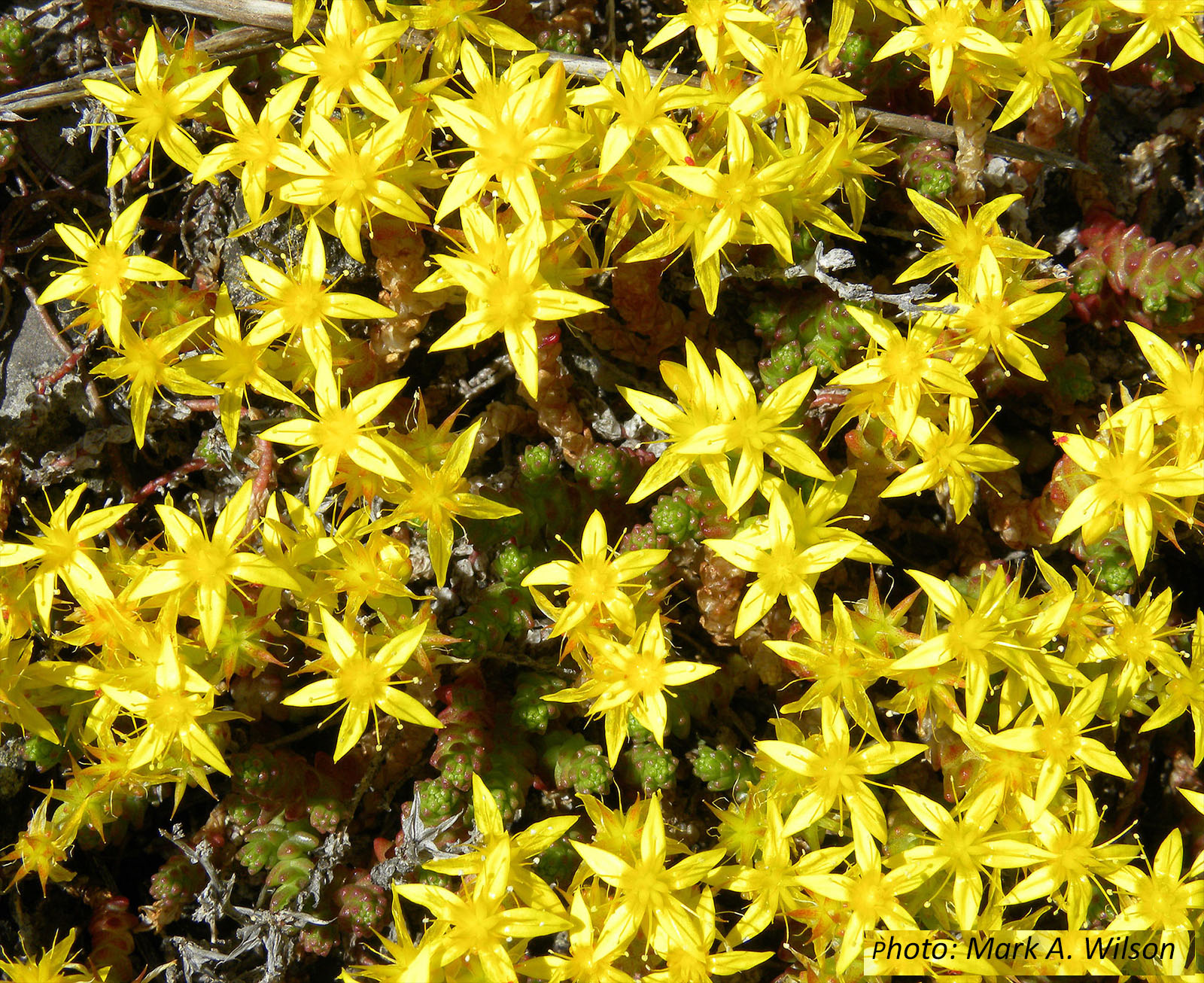Stonecrop
What does it look like?
Stonecrop (Sedum acre), also known as biting stonecrop, is a low-growing, succulent, evergreen, mat-forming herb less than 10cm high. It has fibrous roots and fleshy, round, creeping stems that take root at nodes, and many short erect sterile and flowering stems. Ovalish, yellowish, hairless leaves (5 x 3mm) are very fleshy and acrid to taste. Bright yellow star-like flowers, which appear November-March, are 12mm in diameter and have five sharp petals. These are followed by many seeds in dry, splitting follicles.
Why is it a problem?
- Has a preference for braided river beds
- Alters the natural environment of stony riverbeds
- Reduces the habitat available for birds that nest in braided riverbeds
- Providing cover for predators
- Tolerates floods, and indeed may thrive in them by spreading
Where is it found?
From 1500m to sea level on dry braided river beds. Distribution map; when page opens, just click on the green ‘search’ button without changing any of the settings
How is it spread?
- Leaf and stem fragments root, giving it a creeping habit
- It matures quickly, and produces large numbers of relatively long-lived and well-dispersed seeds
- Tolerates wind, salt, very hot to hard frost, drought, and very poor soils, making it ideal for well-drained dry braided river islands
- Forms dense mats, excluding almost all other species, and threatening rare native low-growing coastal and shingle species on braided river beds

